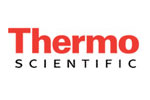Thermo Orion COD165 Thermoreactor
Features
- Will hold 25 round glass vials with 16mm external diameter
- Temperature settings of 100, 120, 150, 160 and 165 degrees Celsius
- Program for automatic shutoff with preset times of 30, 60, and 120 minutes
- Free ground shipping
- Expedited repair and warranty service
- Lifetime technical support
- More
Overview
The Thermo Orion COD165 thermoreactor holds 25 round glass vials and is designed for sample preparation in determining COD, total phosphorus, total nitrogen, total chromium and other parameters in water and sludge analysis. The Thermo Orion COD165 thermoreactor, paired with the Thermo Orion COD reagents and the Thermo Orion AQUAfast AQ4000 advanced colorimeter or Thermo Orion AQUAfast AQ2040 colorimeter, provides the user with a complete analytical setup for COD analysis. The Thermo Orion AQUAfast AQ3700 colorimeter also performs COD analysis, as well as nitrogen and phosphate digestion methods.
Durable
The COD165 thermoreactor is designed to be highly resistant to chemical and mechanical corrosion. The heating block that holds the COD vials allows for very good thermal homogeneity at the selected temperatures. The heating block is equipped with over-temperature protection by a thermostat, which turns off heating when the temperature exceeds 180 C.
Mechanics
The temperature of the heating block is microprocessor controlled. The Pt100 temperature probe does not require any calibration, because when the instrument is turned on, a self test is performed. The COD165 thermoreactor is equipped with a voltage selector for either 115 V or 230 V. Automatic selection of voltage from 90-260 V and frequency from 50-60 Hz with appropriate power cable for US/Canada, EU, and China (included).
Applications
The Thermo Orion COD165 thermoreactor offers additional digestion temperature ranges which meet the COD and other digestion method requirements around the world. The temperature settings are 100, 120, 150, 160 and 165 degrees Celsius. Ideal for environmental and wastewater monitoring
- Samples: Up to 25 Digestion Tubes, 16mm diameter
- Diameter of Holes: 16mm x 25mm
- Selectable Temperatures: 100, 120, 150, 160 or 165 degrees Celsius
- Selectable Times: 30, 60, 120 minutes or continuous
- Safety Cover: Clear plastic, hinged to flip up for loading and unloading
- During Time Count Signal: Visual
- End of Cycle Signal: Acoustic
- Set Temp less than Block Temp Error Signals: Visual and acoustic
- Broken Temp Probe Alarm Signals: Visual and acoustic
- Reaching of Set Temperature Signal: Acoustic
- Thermoregulator: PID microprocessor
- Over-temperature Protection: Yes, on the block
- Precision: +/-0.2% end of scale
- Temperature Probe: Pt100 class A
- Temperature Probe Calibration: Automatic by software
- Heating Block Temp Stability: +/-0.5 C
- Heating Block Temp Homogeneity: +/-0.5 C
- Heating Block Temp Precision: +/-1 C
- Performance from 20 C to 150 C: 12 minutes
- Power Supply: 90 to 260 V / 50 to 60 Hz, detected automatically
- Power: 400 W
- Weight: 3.6 kg
- Dimensions (W x H x D): 155mm x 95mm x 275mm
- (1) Thermo Orion COD165 thermoreactor
- (3) Power cords for 110V US, 220V EU, and 230V China plug
- (1) Operations man
In The News
Combating Water Insecurity in Saskatchewan with Real-Time Data
The prairies of Saskatchewan can be described as one of the least water-secure parts of Canada, making water quality monitoring essential for informed resource management in a region already facing water insecurity. While natural physical properties worsen some of the poor water quality conditions in the region, others are connected to land use. Having grown up spending summers on the shores of Lake Huron, Helen Baulch, an associate professor at the School of Environment and Sustainability at the University of Saskatchewan , has always been dedicated to the protection of water resources. Looking back fondly at her childhood playing along the shore, Baulch also recalls the invasion of quagga mussels during her teenage years and watching the lake change as a result.
Read MoreSeametrics Turbo Turbidity Logger: Boost your Turbidity Monitoring
The Seametrics Turbo Turbidity Logger is a self-cleaning turbidity sensor capable of internally logging over 260,000 data records. The sensor enables researchers, compliance officers, and contractors to monitor turbidity in various applications, from construction and dredging sites to wastewater effluent. Due to its narrow width, this device can be deployed in a range of areas, from small well spaces to rivers and streams. The stainless steel housing and built-in wiper allow the sensor to withstand long-term deployments and reduce the need for maintenance trips. The logger accurately records temperature and turbidity up to a depth of 50 meters.
Read MoreCollecting Data at the Top of the World: How Scientists Retrieve Glacial Ice Cores
A helicopter touches down in the small town of Sicuani, Peru, at an elevation of 11,644 feet. Earlier that day, a boxcar brought fuel, drills, food, and other equipment for a glacial expedition. The year is 1979, and glaciologist Lonnie Thompson is preparing to lead a team to the Quelccaya ice cap in hopes of becoming the first scientists to drill an ice core sample from this glacier. The only problem? The glacier is located at 19,000 feet in one of the most remote areas of the world. The helicopter takes off from the town, but the thin atmosphere at that elevation does not allow it to safely touch down on the ice– due to the aircraft’s weight, and it becomes unstable when the air is less dense.
Read More













